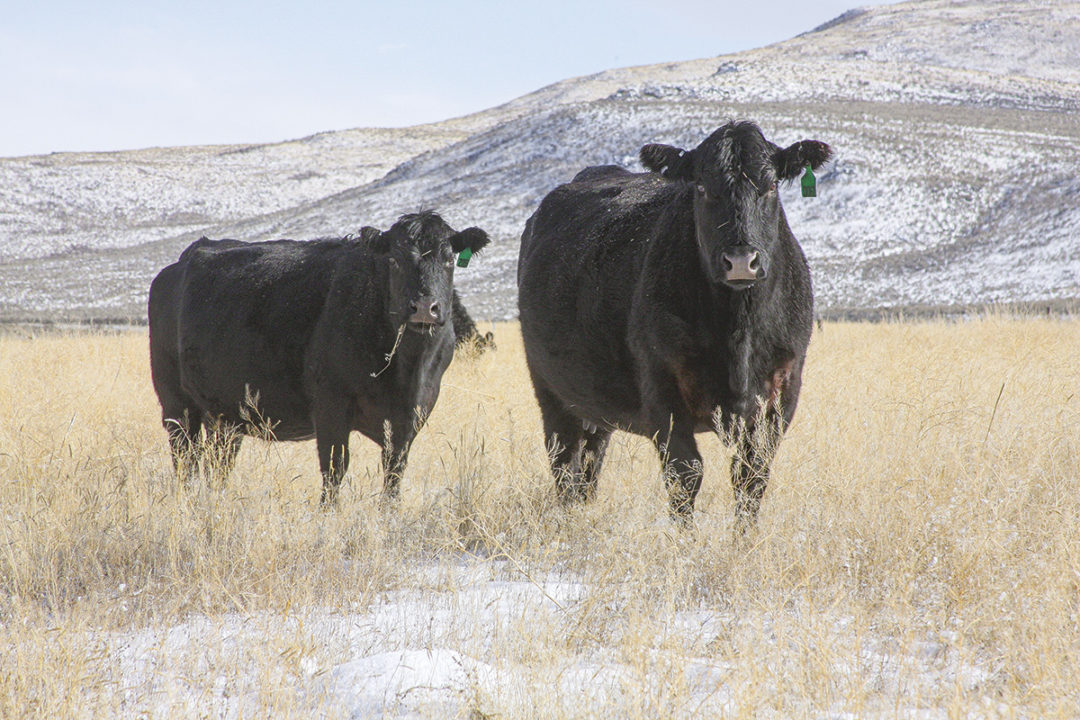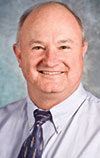With drought conditions persisting and impacting large areas of the western and central U.S., beef producers must routinely monitor the nutrition their cattle are receiving. Most beef producers would agree that determining whether cows on pasture are receiving adequate nutrition is somewhat difficult. However, cow body condition can be used as an indicator. Body condition scoring is a tool that can be used by beef cattle producers to evaluate their cow herds and is a management practice all beef producers should perform. Body condition scores (BCS) are an estimate of the amount of condition (degree of fatness) deposited on the body of a cow. The amount of condition on a cow is a direct reflection of her nutritional status.
The most common system used to evaluate cow body condition (described in Table 1) involves the use of a numerical scoring scale based on the amount of fat cover over a cow’s ribs, back, hooks, pins and around the tailhead.

The numerical scale ranges from 1 to 9, with 1 representing extremely thin cows and 9 representing extremely fat cows. Producers who use body condition scoring rely mainly on visual appraisal but will often manually feel (palpate) for the amount of fat cover to keep from being deceived by variations in the hair coat. When evaluating body condition, it is important for producers to make sure they are evaluating condition and not hair coat, stage of pregnancy, gut fill or muscle.
Even though body condition scoring is a relatively easy, low-cost management practice to learn and implement, beef producers may be avoiding using this tool. To gain some perspective on the level of body condition scoring use on beef operations, consider the results of the 2017 USDA National Animal Health Monitoring System (NAHMS-Beef) survey and the 2017 Western Canadian Cow-Calf Survey (WCCCS). In 2017, NAHMS initiated a study to examine the cattle health and management practices on cow-calf operations in the U.S. The study was conducted in the 24 states with the largest beef cow populations and represented approximately 87% of all U.S. beef cows and approximately 80% of all U.S. beef operations. Similarly, in 2017, the WCCCS surveyed approximately 260 producers, representing approximately 35,000 breeding cows. The survey was conducted to assess the management and marketing practices on beef operations in western Canada.
Results from the NAHMS-Beef 2017 study showed that only 13.6% of surveyed producers used body condition scoring. Large-herd-sized operations were found to be more apt to implement the tool compared to medium-herd-sized operations and small-herd-sized operations. Beef operations in the central region of the U.S. used body condition scoring to a greater extent than operations in the Western and Eastern regions. Reasons for not body condition scoring were not reported in the most recent study. However, in the NAHMS-Beef 2007 study, beef producers were asked why body condition scoring was not used on their operations. The top reasons given were the amount of labor and time required, the difficulty and complexity of the process, and the cost.
As mentioned previously, BCS can be determined via visual appraisal or by physically palpating the animals. In the WCCCS survey, results from 2014 and 2017 were included. In 2014, 19% of producers indicated they used body condition scoring and did so via a hands-on method. The 2017 results showed that 13% of producers used hands-on body condition scoring, and 64% of producers used visual appraisal to assign BCS. The WCCCS asked producers to share why they were not using body condition scoring. The top response related to the hands-on method. Fifty-one percent indicated that visual appraisal was good enough. Cattle seem healthy so no need to condition score, not sure how to condition score and lack of time were the next-most-expressed reasons.
Body condition influences the productivity of the cow herd, which ultimately will impact the profitability of the cow-calf enterprise. Body condition impacts the reproductive efficiency of the cow herd during subsequent breeding seasons. With weaning in the not-too-distant future for many beef cattle operations, it is important to consider the impact body condition at weaning has on subsequent reproduction. In a study using data from a Wyoming ranch, cows with BCS of 3 or less and 4 had pregnancy percentages in the subsequent breeding season of 76% and 85%, respectively. Cows with BCS of 5, 6 and 7 or greater had pregnancy percentages of 94%, 96% and 96%, respectively. Numerous studies have shown that heifers should be in good (BCS 6) condition and cows should be in moderate (BCS 5) condition at calving, weaning and at the beginning of the breeding season, to ensure high levels of reproductive performance.
Body condition of cows should be evaluated and recorded on a regular basis, and the scores should be used to make informed management (feeding, breeding, culling, etc.) decisions. It has been suggested that body condition scoring of beef females occur several times during the production cycle. These include weaning, 45 days post-weaning, 90 days pre-calving, calving and breeding. Observing body condition at these strategic times allows producers to monitor the progress their cows are making toward achieving the target body condition. Research has shown monitoring the body condition of cows impacts the reproductive performance of the herd and ultimately impacts the bottom line of the operation.
The results of the NAHMS and WCCCS surveys show there is plenty of room for more producers to implement body condition scoring. Body condition scoring is relatively easy to learn and can be implemented in most farm/ranch situations. Survey results seem to indicate producers have some difficulty in acquiring the skills needed to BCS their beef cows or have some difficulty recognizing the value. Producers wishing to learn more about body condition scoring can seek information from a variety of sources, including extension faculty across the U.S.








